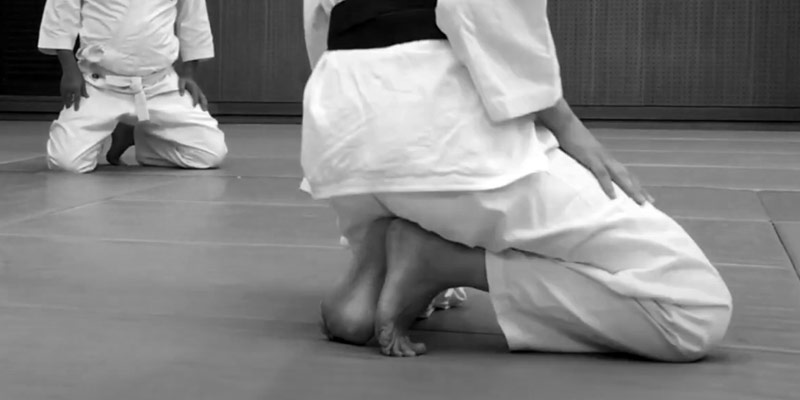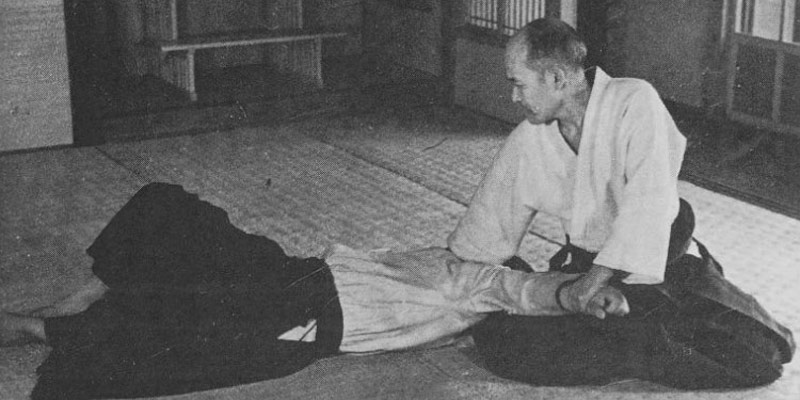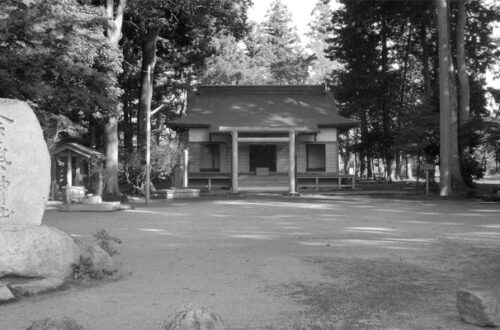
The Art of Shikko and Suwari Waza in Aikido
Shikko 膝行, often referred to as knee-walking, is a fundamental movement method in Aikido. Aikido techniques performed from a seiza 正座 (seated) or shikko position are called suwari-waza 座り技. Suwari-waza is a distinguishing feature of Aikido, rarely seen in other martial arts. To understand why Aikido practices shikko and suwari-waza, one must trace back to Daito-ryu Aiki-jujutsu 大東流 合気柔術, which Morihei Ueshiba, the founder of Aikido, studied before establishing Aikido.
Daito-ryu is said to be an Aizu han no otome-ryu 会津藩の御留流, a secret martial art of the Aizu 会津 domain. The Aizu han was a powerful and significant feudal domain during the Edo period 江戸時代, located in the westernmost region of what is now Fukushima Prefecture 福島県. Otome-ryu refers to martial arts kept secret and taught exclusively to a select group, typically the elite or senior samurai. It was prohibited to engage in matches with other schools or to teach techniques to samurai from other domains. Otome-ryu was formulated to prevent revealing one’s techniques to assassins from other domains and to enhance the cohesion and sense of superiority among the domain’s samurai.

Shikko practice in Aikido
During the time when Daito-ryu was being passed down, there were no battles in Japan, and the senior samurai mainly lived within the castles. As a result, Daito-ryu developed a full set of techniques suitable for use within the castle, where the senior samurai always wore hakama as a form of ritual and lived their daily lives in a seiza posture. They often moved around using shikko rather than standing up, walking upright, and then sitting back down in seiza. Moreover, when being called by the lord in a meeting hall, the proper manner of approaching was shikko. Approaching in a standing posture would result in looking down on the lord from above, which would be highly disrespectful. When returning to the original position, one could either perform shikko backward or turn around 180 degrees. This is called shittai 膝退.
Because much of their time indoors was spent sitting in seiza, it is natural that their defense techniques evolved over time to ensure safety even when attacked while in a kneeling position. Eventually, after the Meiji Restoration 明治維新 and the modernization of Japan, Daito-ryu became accessible to the general public. Morihei Ueshiba, who studied Daito-ryu under master Sokaku Takeda 武田 惣角, founded Aikido.
The practice of shikko and suwari-waza in Aikido is a remnant of Daito-ryu. Ueshiba devoted a significant amount of training time to suwari-waza. It was said that many of his students had patches on their hakama or training pants to reduce knee pain when practicing suwari-waza.

Ueshiba demonstrating suwari-waza
Despite the historical reasons, this does not mean that learning shikko and suwari-waza in modern times is meaningless. Most of Aikido’s techniques can be performed as tachi-waza (standing techniques) or suwari-waza. Ueshiba believed that suwari-waza is important for training the hips. It is mentioned in the book 合気道技法 that Ueshiba stated, “Aikido’s power generation method primarily involves suwari-waza. The movements of suwari-waza are even more difficult than tachi-waza, and mastering them naturally leads to proficiency in tachi-waza.” By practicing suwari-waza, one can not only increase hip joint flexibility and build muscle but also generate power that is difficult to achieve with tachi-waza.
However, it is also true that many people avoid suwari-waza because it hurts their knees, they have existing knee injuries, or they are older practitioners. Despite these challenges, the practice of suwari-waza remains a critical component of Aikido training, offering unique benefits in terms of stability, strength, and technique refinement.
In conclusion, the legacy of shikko and suwari-waza in Aikido is deeply rooted in the historical and cultural traditions of Japanese martial arts. While modern practitioners may face physical challenges in training these techniques, their value in developing core strength, flexibility, and efficient movement remains significant. Through diligent practice, Aikido students can harness the powerful principles of suwari-waza to enhance their overall martial prowess.
Suggested reading: Seiza and Zarei: Embodying Japanese Cultural Values in Aikido
Author’s Note: We appreciate your readership! This article serves as a preliminary introduction to the subject matter. While we aim for accuracy, we cannot guarantee the content’s precision and it may contain elements of speculation. We strongly advise you to pursue additional research if this topic piques your interest. Begin your AikidoDiscovery adventure! 🙂




